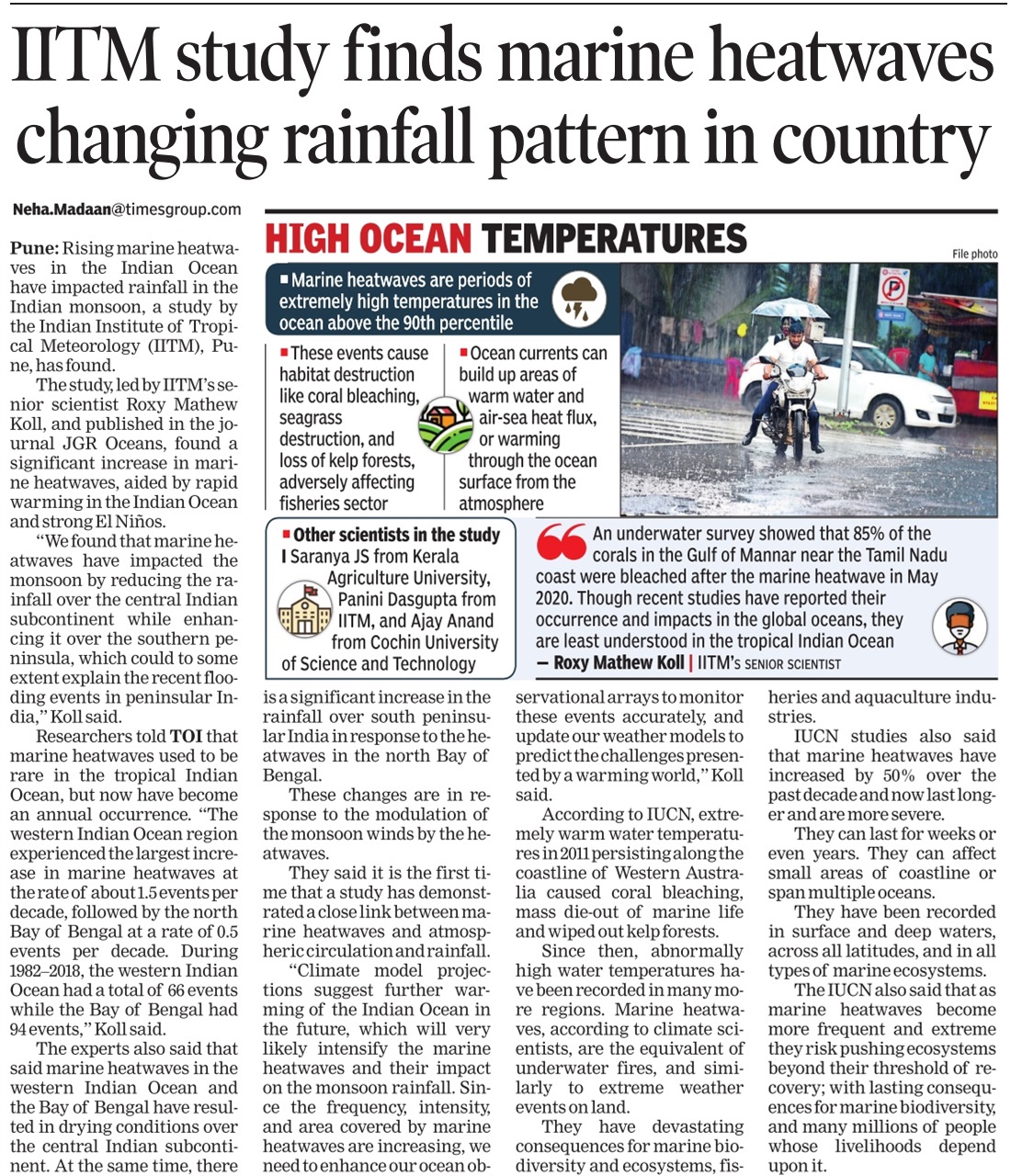| Marine Phytoplankton in a rapidly warming Indian Ocean | ||
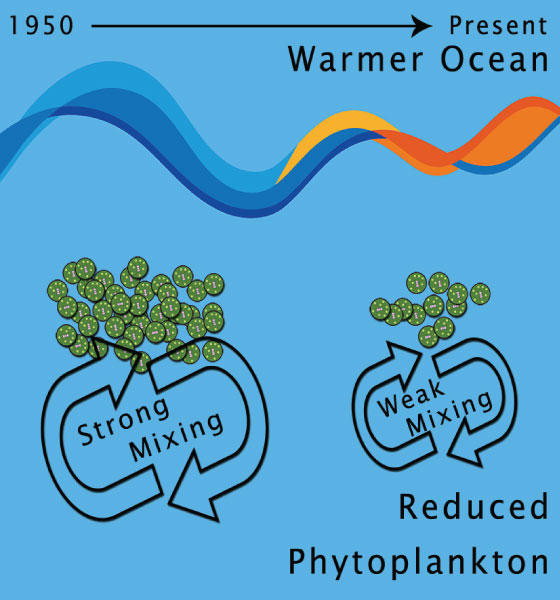 Indian Ocean warming and a reduction in marine phytoplankton Marine phytoplankton, which constitutes half of the global net primary production, are the microscopic plants in the ocean. Over the tropical oceans, the western Indian Ocean hosts one of the largest concentration of phytoplankton blooms in summer. Interestingly, this is the region which exhibits the largest ocean surface warming. Earlier studies, which faced a roadblock due to data unavailability, indicated an increase in phytoplankton over this area. However, our study using extended satellite data and model historical simulations indicate a long-term decline due to the rapid warming in the Indian Ocean. Indian Ocean warming and a reduction in marine phytoplankton Marine phytoplankton, which constitutes half of the global net primary production, are the microscopic plants in the ocean. Over the tropical oceans, the western Indian Ocean hosts one of the largest concentration of phytoplankton blooms in summer. Interestingly, this is the region which exhibits the largest ocean surface warming. Earlier studies, which faced a roadblock due to data unavailability, indicated an increase in phytoplankton over this area. However, our study using extended satellite data and model historical simulations indicate a long-term decline due to the rapid warming in the Indian Ocean. | ||
| Warm Ocean, Weak Monsoon | ||
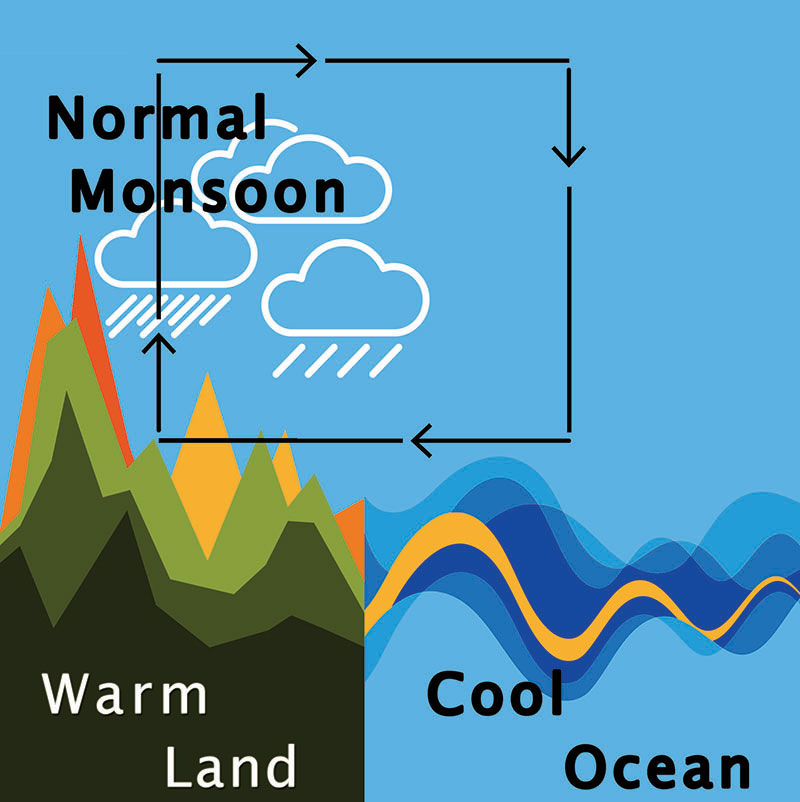 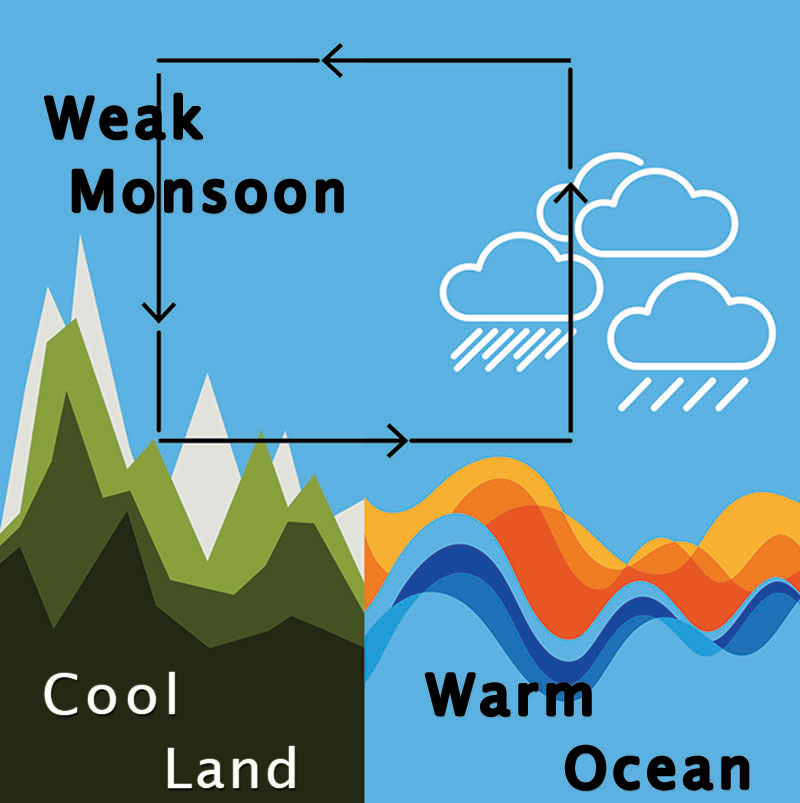 Land-sea temperature difference is a major force behind driving the monsoon circulation. Studies have shown that with increased greenhouse gases, land is warming faster than the ocean. However, we find that the scenario is different for the South Asian domain… here the ocean is warming at a rapid pace, with the land left behind in the race… | ||
| Indian Ocean warming, the bigger picture | ||
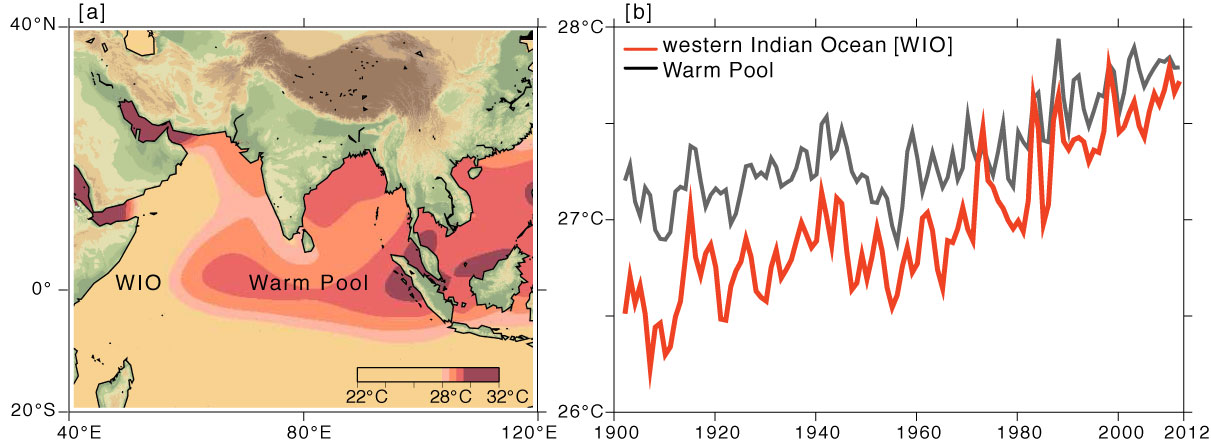 Among the major oceans, Indian Ocean is the smallest, and the warmest. Recent research finds that Indian Ocean also sustains the fastest warming rates among these oceans, entitling itself as a major contributor to the global ocean surface warming. The curious case of Indian Ocean warming, which had remained a chicken-egg problem, is brought to spotlight. Among the major oceans, Indian Ocean is the smallest, and the warmest. Recent research finds that Indian Ocean also sustains the fastest warming rates among these oceans, entitling itself as a major contributor to the global ocean surface warming. The curious case of Indian Ocean warming, which had remained a chicken-egg problem, is brought to spotlight. | ||
| Tropical ocean-atmospheric coupling associated with the monsoon intraseasonal variability | ||
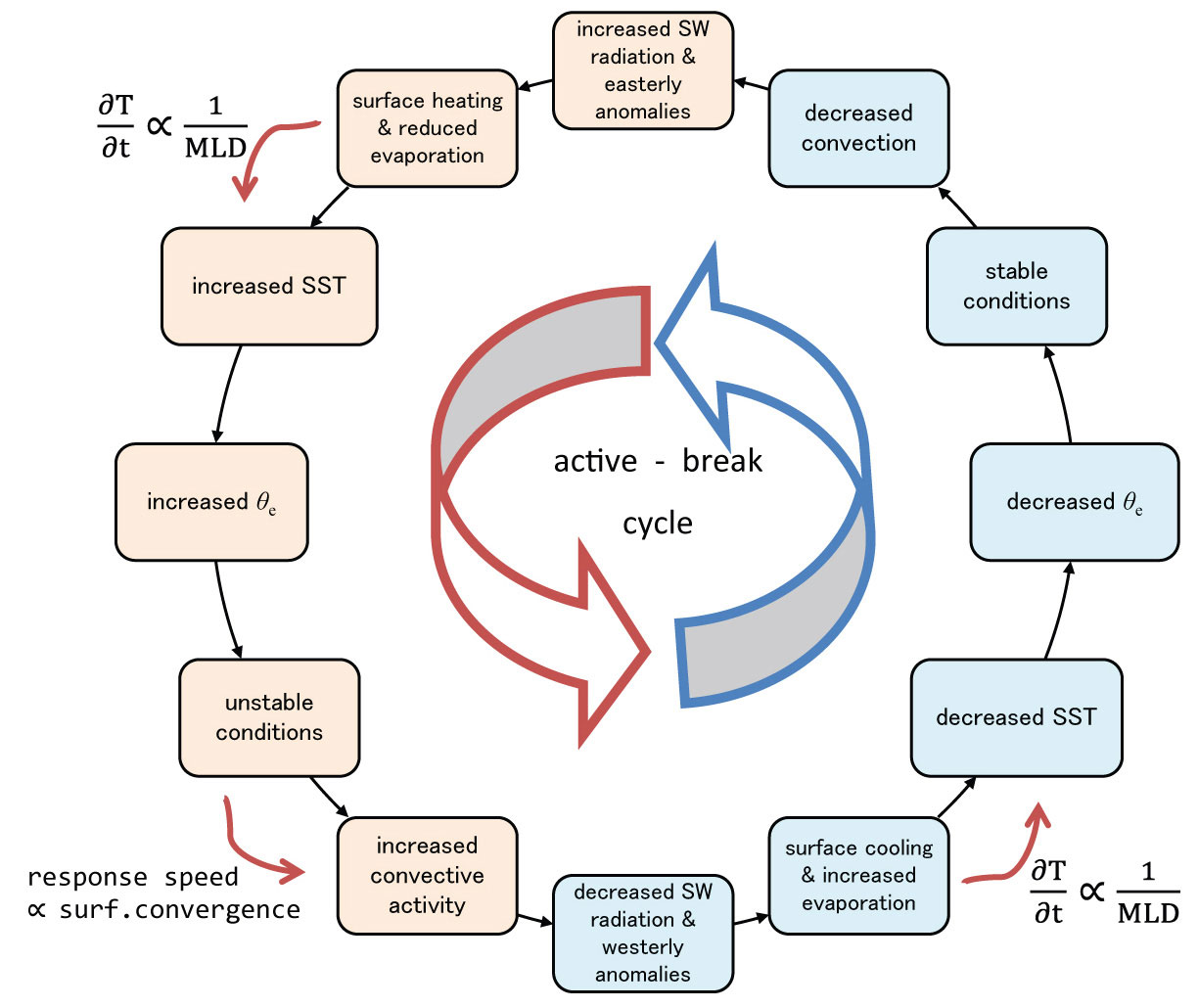 The top 2-3m of the ocean holds as much heat as the whole atmosphere above it. Though changes in the atmosphere tend to be quicker than the ocean, the surface ocean also displays strong variability in short timescales. Our analysis shows that this variability of sea surface temperature (SST) and surface ocean dynamics has a larger role on the active and break spells of the South Asian monsoon—than that was thought before. The air-sea interaction processes from an ocean perspective is explored in this study. The top 2-3m of the ocean holds as much heat as the whole atmosphere above it. Though changes in the atmosphere tend to be quicker than the ocean, the surface ocean also displays strong variability in short timescales. Our analysis shows that this variability of sea surface temperature (SST) and surface ocean dynamics has a larger role on the active and break spells of the South Asian monsoon—than that was thought before. The air-sea interaction processes from an ocean perspective is explored in this study. | ||
| SST-precipitation relationship over the monsoon basins, in a changing climate | ||
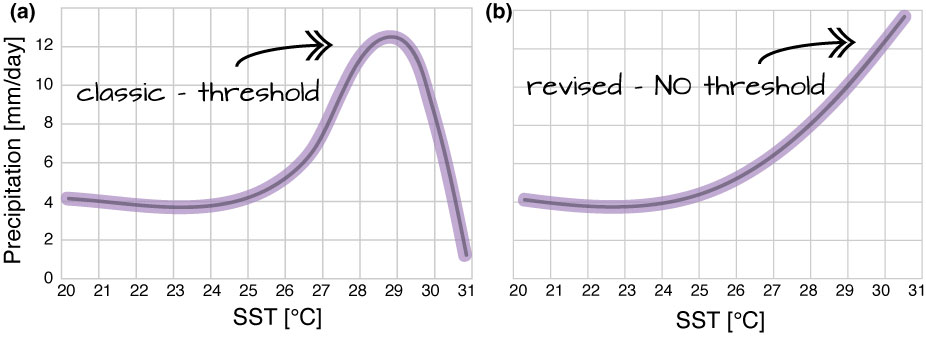 Sea surface temperature (SST) can be considered as the single representative quantity of the ocean, which communicates the ocean’s thermal inertia to the atmosphere, through an exchange of the surface fluxes. Our understanding of the atmospheric response, especially that of the rainfall, has been paradoxical. Here we explore the relationship between these two. Sea surface temperature (SST) can be considered as the single representative quantity of the ocean, which communicates the ocean’s thermal inertia to the atmosphere, through an exchange of the surface fluxes. Our understanding of the atmospheric response, especially that of the rainfall, has been paradoxical. Here we explore the relationship between these two. |



